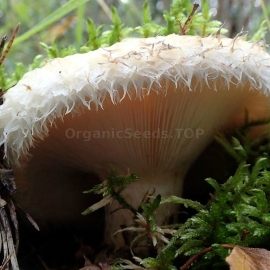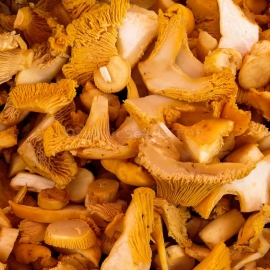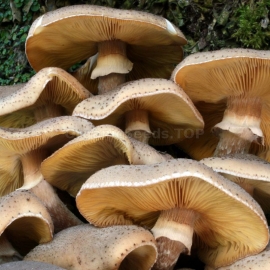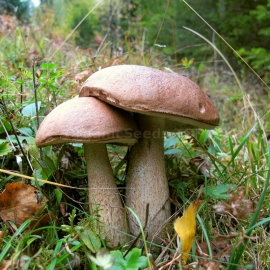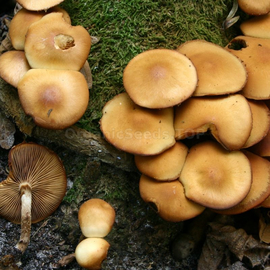 EXCLUSIVE
EXCLUSIVE
«Summer honey agaric» (Kuehneromyces mutabilis) - Organic Mushroom Spawn
6.10 €
Summer mushrooms contain many vitamins, microelements, amino acids and biologically active substances that are indispensable for the full functioning of all body systems, a very tasty dish will turn out if you bake mushrooms with meat or fish in foil.
-
Organic Mushroom Spawn «Summer honey agaric» (Kuehneromyces mutabilis)
Summer opinok is widely widened in leafy and wild forests of a peaceful prairie climate, in regions with arid climates it is rarely seen.
The seasons for summer mushrooms are April-November, if conditions are favorable, the mushroom can grow until December. In a young mushroom, the cap is convex, but as it develops, it straightens out, acquires a pronounced tubercle, and has a smooth and mucous surface. Interestingly, during the rainy season, the hat is translucent, has a brown color, and in dry weather it becomes matte, honey-yellow. A characteristic feature of the fungus is the grooves on the edges of the cap, as well as concentric zones, dark fields that appear in rainy weather.
Useful properties
Summer mushrooms contain many vitamins, microelements, amino acids and biologically active substances, which are indispensable for the full functioning of all body systems.
Taste and application
Summer mushrooms are distinguished by thin, watery flesh, pale yellow-brown in color, slightly lighter on the stem, with a mild taste and a delicate smell of fresh wood. However, only mushroom caps are used for food - they make very tasty soups and sauces. A very tasty dish will turn out if you bake honey agarics with meat or fish in foil. Also, mushrooms can be frozen, canned, dried. Once harvested, the mushroom can be stored in the refrigerator for 4 to 6 days.
Cultivation and yield
It is best to grow summer mushrooms on hardwood trees - beech, hornbeam, aspen, alder, ash, birch, maple, oak, willow and chestnut. The ideal time for inoculation is April, May and August. It is best to graft the mushroom on stumps in the spring. Summer mushrooms will grow well on logs buried 2/3 in a horizontal position. It is important to remember that summer mushrooms are demanding on air and soil moisture, therefore, you need to find a moist, shady place for them.
If the air humidity drops below 75%, the mushroom caps begin to dry out, however, if they are watered, they return to normal. The white mycelium is overgrown with brown nodules, and after a few weeks they turn into mushrooms. Honey mushrooms grow in bushes with many fused legs. If on the bush most of the hats are straightened, the entire bush must be cut off at the base. If favorable conditions are created, the summer mushroom bears fruit from April to October, the duration of fruiting depends on the density of the tree, on average it is 3-7 years, on a stump - up to 10 years.
The yield of mushrooms is 15-30% of the mass of the substrate, the peak falls on the second and third year. As you can see, growing this wonderful mushroom at home is not at all difficult, and you can appreciate its useful and gustatory qualities.
With this product buy
Product code: 10546
6.10 €
Pulp dense, strong, white, with very characteristic smell reminding a smell of fruit. Lacteal juice white, on taste caustic, on air becomes sulfur-yellow. Plates are quite frequent, wide, poorly descending on a leg, white with a yellowish shade.
6.10 €
On the lower surface, underneath the smooth cap, most species have gill-like ridges that run almost all the way down its stipe, which tapers down seamlessly from the cap. Many species emit a fruity aroma, reminiscent of apricots.
6.10 €
Armillaria mellea, commonly known as honey fungus, is a basidiomycete fungus in the genus Armillaria. It is a plant pathogen and part of a cryptic species complex of closely related and morphologically similar species.
6.10 €
Lactarius deliciosus, commonly known as the saffron milk cap and red pine mushroom, is one of the best known members of the large milk-cap genus Lactarius in the order Russulales.

